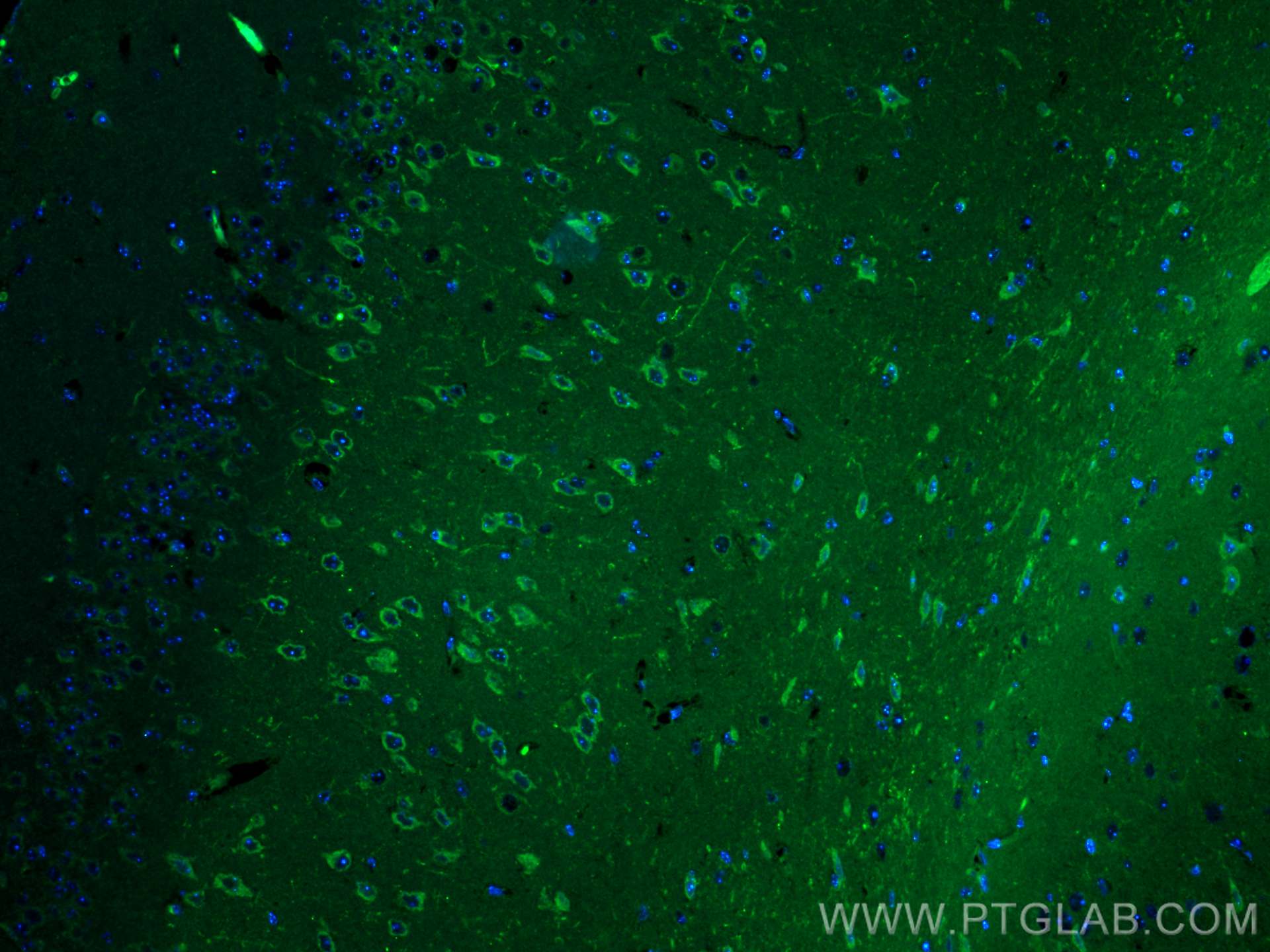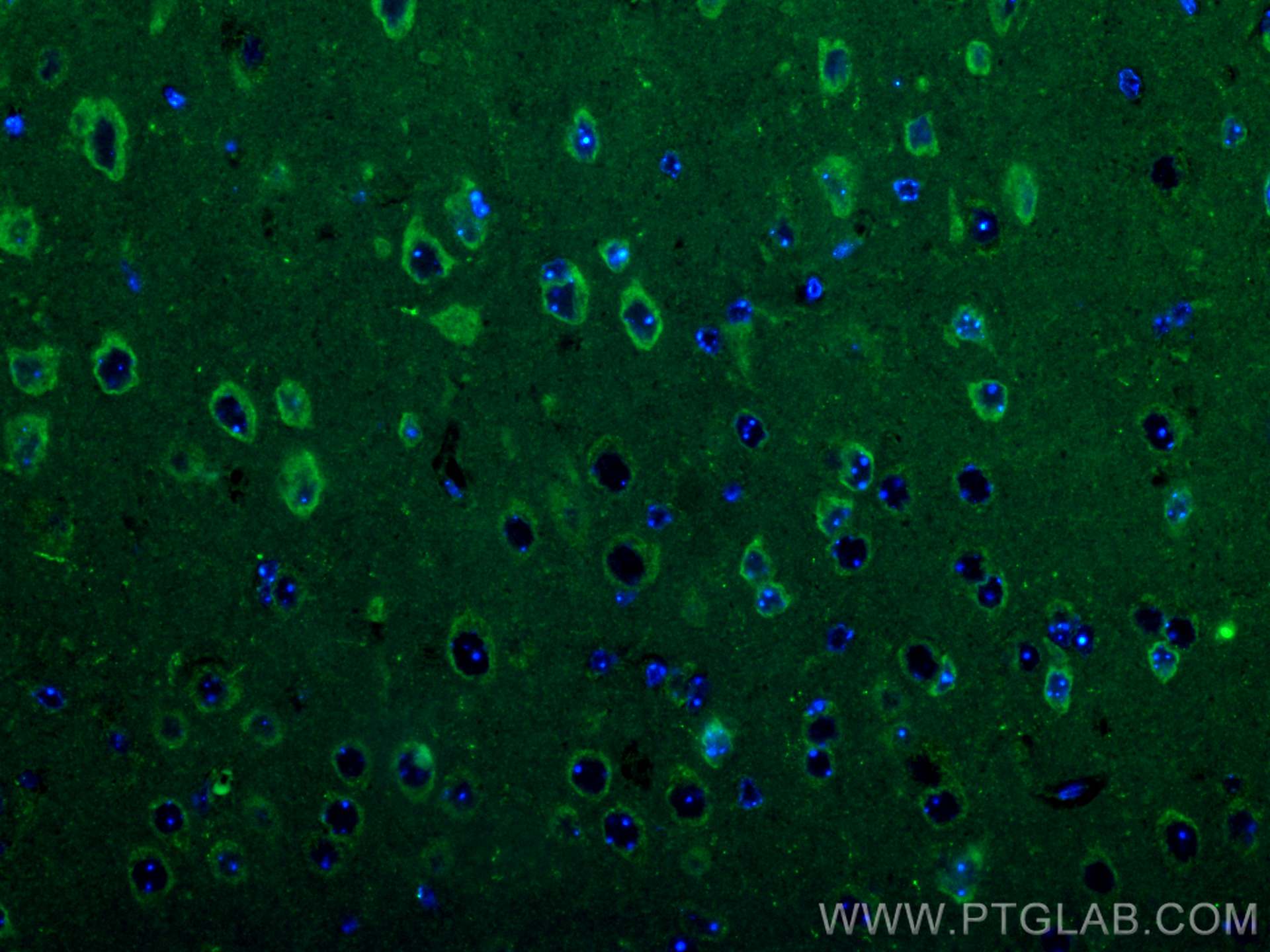CoraLite® Plus 488-conjugated CRH/CRF Polyclonal antibody
CRH/CRF Polyclonal Antibody for IF
Host / Isotype
Rabbit / IgG
Reactivity
human, mouse, rat
Applications
IF
Conjugate
CoraLite® Plus 488 Fluorescent Dye
Cat no : CL488-10944
Synonyms
Validation Data Gallery
Tested Applications
| Positive IF detected in | mouse brain tissue |
Recommended dilution
| Application | Dilution |
|---|---|
| Immunofluorescence (IF) | IF : 1:50-1:500 |
| Sample-dependent, check data in validation data gallery | |
Product Information
CL488-10944 targets CRH/CRF in IF applications and shows reactivity with human, mouse, rat samples.
| Tested Reactivity | human, mouse, rat |
| Host / Isotype | Rabbit / IgG |
| Class | Polyclonal |
| Type | Antibody |
| Immunogen | CRH/CRF fusion protein Ag1371 相同性解析による交差性が予測される生物種 |
| Full Name | CRH/CRF |
| Calculated molecular weight | 21 kDa |
| Observed molecular weight | 35-38 kDa |
| GenBank accession number | BC011031 |
| Gene symbol | CRH |
| Gene ID (NCBI) | 1392 |
| Conjugate | CoraLite® Plus 488 Fluorescent Dye |
| Excitation/Emission maxima wavelengths | 493 nm / 522 nm |
| Form | Liquid |
| Purification Method | Antigen affinity purification |
| Storage Buffer | PBS with 50% Glycerol, 0.05% Proclin300, 0.5% BSA, pH 7.3. |
| Storage Conditions | Store at -20°C. Avoid exposure to light. Stable for one year after shipment. Aliquoting is unnecessary for -20oC storage. |
Background Information
CRH, also called CRF or corticoliberin, is a peptide hormone and neurotransmitter involved in the stress response. Marked reduction in this protein has been observed in association with Alzheimer disease. In addition to production in the hypothalamus, this protein is also synthesized in peripheral tissues, such as T lymphocytes and is highly expressed in the placenta. In the placenta it is a marker that determines the length of gestation and the timing of parturition and delivery.
Protocols
| Product Specific Protocols | |
|---|---|
| IF protocol for CL Plus 488 CRH/CRF antibody CL488-10944 | Download protocol |
| Standard Protocols | |
|---|---|
| Click here to view our Standard Protocols |



